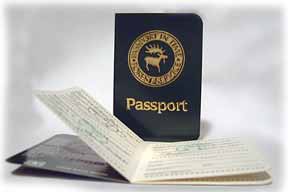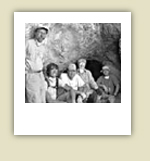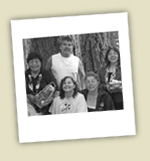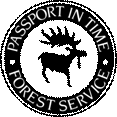 |
|
PIT
Project Guidelines
The following guidelines for PIT projects have not changed much since 1991, when PIT became a national program within the USFS. Their longevity is a testament to the continued importance of the original fundamental principles and goals of PIT.
PIT
Project Rules
1. |
Your primary goal must be to increase public awareness of history and historic preservation, not simply to get work done. Volunteers will help you accomplish tangible goals, but primary consideration must be for the volunteers' experience. Not every project lends itself to public involvement. |
2. |
All PIT projects must be open to the public and posted on the PIT website. |
3. |
Engaging PIT volunteers on a project to meet National Historic Preservation Act (NHPA) Section 106 compliance commitments is OK, but not recommended if the agency must meet tight deadlines. You cannot guarantee what volunteers accomplish in a given period of time. |
4. |
Do not overlook NHPA consultation with State Historic Preservation Officers and American Indian groups for PIT projects involving activities requiring such consultation. |
5. |
A professional historic preservationist must directly supervise the volunteers. The general rule is one professional to four volunteers, though the ratio varies according to activity. |
6. |
All volunteers must sign the volunteer agreement required by the agency or organization hosting the project. |
7. |
Maintain an agency presence at the project at all times. Volunteers should know their tax dollars are being wisely spent in ways they can directly enjoy. |
8. |
If your project is carried out in cooperation with a university field school or by a contractor, it is best if you are on-site as the volunteer coordinator. If that is not possible, make sure the field school director or contractor is fully aware of the goals of PIT and is supportive. That person is representing your agency or organization when you are not present. |
9. |
Involve diverse groups in your projects when possible. For example, tribal involvement greatly enhances volunteers’ experience and offers Tribes an opportunity to educate the public. Projects involving subjects such as the Underground Railroad or Basque history expand public awareness about our diverse history and attract diverse populations as volunteers. |
10. |
Write up the results of your project as soon as possible. Of course, this is standard professional procedure, but a summary of results should also go to your volunteers and to any media who covered your project. An informal report, showing how the work produced new scientific information or resulted in better management of historic properties, is an excellent way to illustrate the benefits of PIT internally and to show your volunteers how they have contributed to the preservation of the nation’s historic fabric. |
11. |
Natural disasters and situations that might put volunteers in jeopardy are reasons to cancel a project; transfers of personnel, increased workloads, and unexpected budget decreases are not. PIT is advertised nationally, offering an experience to visitors to public lands. If we advertise it, we must provide it. If you think there is a chance you will suffer budget cuts, workload increases, or personnel decreases, perhaps it is not the best time to plan a PIT project. Furthermore, if all but 1 or 2 of your volunteers cancel, those individuals still deserve the experience you offered. |
12. |
Sometimes the best laid plans fail. Designate an alternate project leader who can take over should you be unable to carry out your project leader responsibilities. Get your supervisor’s support, including commitment to funding should the planned funding disappear. |
13. |
If you have volunteers who continue to work after a project is over and you want to count them, report the hours by individual volunteer to the Clearinghouse and note which project they are continuing to work on so the Clearinghouse will know where to record their hours. |
14. |
You may conduct a PIT project on land under other ownership or jurisdiction. Two conditions apply: a) You must be able to show how working off your agency’s or organization’s land will benefit your heritage program, and b) you need an agreement document to allow you to engage volunteers on land that is not under your direct jurisdiction. For example, a trail might cross through the jurisdiction of different agencies or even cross private land. To evaluate the entire trail, you must work across jurisdictions. A simple agreement document will provide the vehicle for engaging volunteers on land under multiple jurisdiction and/or ownership. |
15. |
Adhere to deadlines so: a) you get enough people and b) volunteers have enough time to arrange schedules/travel/etc. |
|top|
Helpful Hints for Successful PIT Projects
Check back frequently to this section. PIT Leader recommendations and ideas are added periodically.
1. |
Historic restoration projects result in immediate, visible results – a positive for volunteers and also less follow-up work for you. Archaeological excavations require follow-up analysis, report writing, and curation. |
2. |
However, if you do an archaeological excavation, be assured that volunteers are just as willing to help with the less exciting parts of the job as well. Follow-up lab and curation projects are popular, winter-time projects. |
3. |
If your volunteers are camping in an agency fee campground, it is nice to provide free camping while they are volunteering. Check with the responsible agency official to see if this is possible. If it is a concessionaire campground, the agency may be able to reimburse the concessionaire for revenues lost from the non-paying volunteers. |
4. |
Providing meals to your volunteers on field projects is a huge benefit to the volunteers and to you. If camping in a wilderness, it facilitates keeping a clean campsite. At the end of the day, you can focus on other things besides meal planning and preparation. It allows the volunteers to get together after hours and talk about the day’s activities, rather than disappear to their own campsites to think about cooking after working all day. There are many ways to legally provide meals for your volunteers. Some project leaders include meals in the cost of hosting the project and get a personal services contract for a camp cook. Others “pass the hat” at the beginning of a project and pool the money to buy groceries then have the volunteers share in cooking duties. Ask your procurement folks for ways to provide meals for your volunteers and do this at least 90 days ahead of time – not the week before your project! |
5. |
Providing some project incentives is always popular. Volunteers like to take something away with them as a thank you for their time and effort. Items provided in the past include ball caps, t-shirts, insulated drink mugs, cold food packs, and maglites. Use your imagination…and the PIT logo! |
|top
The USFS supplies PIT passports, a PIT banner, and PIT logo pins, iron-on patches, and a rubber stamp, to all USFS projects. To assist other agencies and organizations just starting up, the USFS has changed the design of the passport to be more generic, and purchased generic PIT logo pins and patches, which are free to those agencies and organizations while supplies last. The PIT logo rubber stamp has always been generic without any reference to USFS.
Agencies and organizations wishing to produce their own items should contact the USFS National Coordinator for specifications.
Rules for Use of the PIT logo
The moose is pretty loose. We don't want to stifle creativity so there are only a few things you can't mess with. Otherwise, go with the flow, change with the times, go crazy, and have fun!
Hard and fast rules: The following attributes must never change:
- The logo is round
- Passport in Time always appears at the top
- The two dots at the side remain (it's a design thing)
- The moose and letters stand out against a contrasting background.
- The words at the bottom will depend on where the logo is used.
You may change the following to suit your whims:
- Colors
- Size
- The direction the moose faces. (I swear when we started back in 1991, he faced left!)
If you are using the logo on items to give away to the general public and not specifically or only to PIT volunteers:
- Your agency or organization name is at the bottom. USFS version example
- Or, you may choose to use the generic logo with "Preserve America" at the bottom in acknowledgement that PIT is a Preserve America partner.
- Do not put the word "Volunteer" at the bottom if you are using it on an item to give to the general public.
- PIT passports are only for volunteers. Each passport has a unique number assigned by the PIT Clearinghouse.
- The PIT logo on the front has "Volunteer" on the bottom, so it may be used by multiple agencies or organizations.
- The banners are 3 x 5 feet, nylon with metal grommets on the corners for displaying at PIT projects indoors or out. Depending on use and environment, they last for several years before needing replacement.
- Currently, there are no generic versions as the last order pre-dated PIT's expansion beyond the USFS.
- PIT pins are inexpensive. Give them out freely as promotional items.
- The USFS version has "Forest Service" at the bottom. The current generic version available has "Preserve America" at the bottom.
PIT Logo Patches
- PIT patches are not inexpensive. Give them only to volunteers.
-
The USFS version has "Forest Service" at the bottom and is always green and gold (OK, orangey-yellow). The current generic version available has "Volunteer" at the bottom and is maroon and beige.
- Each PIT project leader receives a PIT stamp to stamp volunteers' PIT passports.
- The PIT stamp is only the moose in a circle, so is appropriate for any agency or organization.
|
|
Frequently
Asked Questions
How
do I select volunteers?
The PIT Clearinghouse forwards volunteer applications to you within two days of the advertised application deadline. A roster will be included for you to indicate which volunteers you select and those you do not. Send that list back to the Clearinghouse within 3 weeks of receiving your applications; the sooner, the better.
You may call the Clearinghouse during the application period to see how many applicants have been received for your project to date.
How do I notify applicants that they have been accepted?
The best way is by phone. Follow up with an email or letter with additional project details.
Do I need to call those volunteers I have not selected?
No. The Clearinghouse notifies those not selected and refers them to similar projects that still have openings.
What
should I send to volunteers prior to the
project?
At a minimum, volunteers should receive:
- A map and directions on how to get to the project or meeting place
- General information about weather in the area
- Personal gear or supplies they will need (Tents? Sleeping bags? Good hiking shoes? Food? Water?)
Depending on your project, other information may include:
- Information about dangers (past projects have included warnings that the area has grizzlies, snakes, chiggers, etc)
- Whether dogs are permitted.
- Some leaders prefer to send volunteer forms at this time. Others prefer to have volunteers sign those when they arrive on the project.
What
do I do if someone cancels?
If you have time to replace that individual, begin by contacting applicants who you were unable to originally select. If no one is available from the original list, contact the Clearinghouse. If there is time, we will advertise openings on the Web page.
New PIT volunteers receive a PIT Passport. Each time a volunteer participates in a project, the project leader stamps their passport and documents their hours.
Each volunteer has a unique passport number. This allows the Clearinghouse to track hours contributed by individual, agency or organization, year, and project over the entire history of the PIT program. Individuals keep the same passport number even if they fill up multiple passports.
What do I do with the Passports?
Give each new volunteer a passport and assign a passport number from the block of new numbers the Clearinghouse sent you (see below). Be sure to write down the passport number for each person on the volunteer hours form. Passport numbers not used on the project are returned to the Clearinghouse.
What do I do if a volunteer has filled up a Passport or lost one and needs a new one?
If you know in advance, you may request a new passport for the individual from the Clearinghouse. You may also request extra blank passports for such eventualities. However, if you do issue a new passport to a returning volunteer, be sure to ask the Clearinghouse for the individual's passport number because remember, an individual keeps the same number regardless of how many passports he or she fills up (or loses). Volunteers may also contact the Clearinghouse directly to request new or replacement passports.
What does the Clearinghouse send to PIT project leaders?
The Clearinghouse sends project leaders passports for new volunteers with a block of numbers for you to assign on-site (returning volunteers already have passports, theoretically); a PIT banner to display; PIT patches for volunteers; PIT pins for volunteers, visitors, and public relations; a moose stamp for validating the passport, and forms to fill out at the end of the project, including the volunteer hours reporting form and the project critique form.
Why do I have to submit my project proposal again if it is almost the same as last year's project proposal?
The on-line proposal automatically populates the database, from which data is downloaded to create the proposal for the Web page and the quarterly reports submitted to each organization hosting PIT. If you know your project will recur and all that will change are dates and minor details, please call the Clearinghouse so they can streamline the proposal with the new information. You do not need to submit a recurring project on-line. You will need to secure your responsible official's signature and contact information again for the new fiscal year.
May I accept international volunteers and if so, what rules apply?
Yes, you may accept international volunteers. An international visitor that is volunteering can do so on a regular tourist visa as long as we are not providing housing or per diem. If you are providing housing or per diem, an international visitor must have a J-1 visa. The individual must acquire those documents on his own; PIT does not provide support or help in applying for visas.
Can volunteers claim tax deductions for their participation in PIT?
Volunteers may be able to deduct certain unreimbursed expenses such as travel to and from the project, and lodging and meal expenses that were not provided or reimbursed by the hosting agency or organization. Volunteers for a Federal government agency may not deduct the value of their time. Information on this subject is available from Internal Revenue Service taxpayer assistance offices.
How does Homeland Security Presidential Directive (HSPD) 12 - Policy for a Common Identification Standard for Federal Employees and Contractors affect PIT volunteers?
HSPD12 Attachment A - "Implementation Guidance for Federal Departments and Agencies" contains the following situations that are applicable to PIT volunteers:
1.B. "(HSPD12) Does not apply to occasional visitors to Federal facilities to whom you would issue temporary identification." PIT volunteers working in office settings are already required to get visitor passes like any visitor to a government office.
1.C. "(HSPD12) Does not apply to individuals under contract c to a department or agency, requiring only intermittent access to federally controlled facilities." A Volunteer Agreement is the same as a contract for purposes of this section.
6. "You are already required under the Privacy Act of 1974 (5 U.S.C. § 552a), the E-Government Act of 2002 (44 U.S.C. ch. 36), existing OMB policy and section 2.4 of the Standard to satisfy privacy and security requirements. Implementing the Directive does not alter these requirements. In addition, prior to identification issuance you must:
A. Ensure personal information collected for employee and contractor identification purposes is handled consistent with the Privacy Act of 1974 (5 U.S.C. § 552a).
B. Assign an individual to be responsible for overseeing the privacy-related matters associated with implementing this Directive."
Personal information on the Volunteer Agreement signed by all PIT volunteers is handled consistent with the Privacy Act. The PIT Guidelines require oversight and direct supervision of PIT volunteers. Both requirements are thus met.
7.F. "The requirements for temporary employees and contractors should be viewed as the minimum requirements, dependent on risk and other factors. Agencies who employ temporary personnel (e.g. contract employment under special arrangements with schools, businesses, state and local governments, etc.) should apply this guidance as follows:
Employed 6 months or less
a) Apply adequate controls to systems and facilities (i.e. ensuring temporary staff has limited/controlled access to facilities and information systems).
b) Provide temporary employees and contractors with clear documentation on the rules of behavior and consequences for violation before granting access to facilities and/or systems.
c) Document any security violations involving these employees, and report them to the appropriate authority within 24 hours."
The procedures in a), b), and c) are the kinds of practical cautions we must to apply to PIT volunteers.
PIT volunteers are basically visitors (whether they're in offices or out in the woods), they sign a volunteer agreement and are supervised. The security risk is extremely low. We already apply common sense in our selection of volunteers, so the same common sense will help us apply security precautions. We should be vigilant, but not stupid.
Are background checks required or allowed on PIT volunteers?
The PIT Program itself does not require background checks, nor do the USFS volunteer regulations. In the USFS, law enforcement officials cannot initiate a background check unless they have a written authorization of the person to be checked or there is a criminal offense or investigation underway.
If a specific PIT project warrants a background check, the agency or organization official may request consent for a background check and explain that it is only for the specific project and not a general PIT or agency requirement. If a potential volunteer declines to sign, you can decline to accept them as a volunteer.
This question came up when a local Indian tribe cooperating with the USFS on a PIT project, requested background checks on volunteers taking part in the project. USFS law enforcement requested consent from volunteers and ran the checks. All records of background checks are confidential. Law enforcement officials could tell project leaders only if the record was clean, and if it was not, what the offense was.

|top|
|
|







